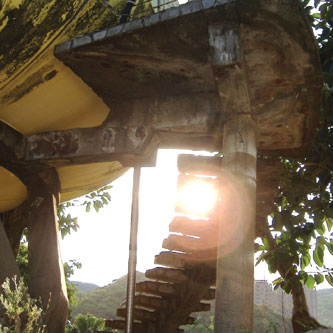 Australian
guitarist Bruce Stringer is breaking down walls for the art
of sonically electrifying electric guitar music. The 2015 release
of One—the
name One
illustrated
with an "Omega" symbol is on the CD packaging—is
filled with a range of guitar instrumental tracks that are boldly
dynamic and highly explosive. Commenting, in the following interview,
on listeners and critics attempting to describe the sound of his new
CD, Bruce tells mwe3.com "I’m not keen on labels, in
general, because it tends to polarize the audience before they’ve
heard a single note. I’m not sure if the album is progressive
rock, or not. My definition of progressive is probably closer to an
ideal rather than a sound, which might go against other people’s
definitions of the term. I’ll leave that up to the listeners
to decide." Dynamic, melodic and electrifying are just some
of the adjectives that come to mind to describe Bruce Stringer’s
guitar-centric vision. The CD packaging of One
is also
very intriguing and clearly, with Bruce performing most of the instrumentation,
his craft is even more clearly highlighted—this
in addition to his creative production and engineering work too. In
the know music fans will note that Bruce also works with Elaine Wang
Yi-Ling in the Chinese-Western duo called Space Of Snow. Even though
Bruce is one of the rising guitarists currently recording in the instrumental
rock fusion realm, he is also greatly influenced by the orchestral
synthesized soundtrack music of giants like Vangelis and Jean-Michel
Jarre and you can literally feel that sense of wide-screen dynamics
throughout this CD. Guitar fans looking for the next big thing in
the world of rock instrumental music, pick up and give a listen to
Bruce Stringer’s One.
www.BruceStringer.net
Australian
guitarist Bruce Stringer is breaking down walls for the art
of sonically electrifying electric guitar music. The 2015 release
of One—the
name One
illustrated
with an "Omega" symbol is on the CD packaging—is
filled with a range of guitar instrumental tracks that are boldly
dynamic and highly explosive. Commenting, in the following interview,
on listeners and critics attempting to describe the sound of his new
CD, Bruce tells mwe3.com "I’m not keen on labels, in
general, because it tends to polarize the audience before they’ve
heard a single note. I’m not sure if the album is progressive
rock, or not. My definition of progressive is probably closer to an
ideal rather than a sound, which might go against other people’s
definitions of the term. I’ll leave that up to the listeners
to decide." Dynamic, melodic and electrifying are just some
of the adjectives that come to mind to describe Bruce Stringer’s
guitar-centric vision. The CD packaging of One
is also
very intriguing and clearly, with Bruce performing most of the instrumentation,
his craft is even more clearly highlighted—this
in addition to his creative production and engineering work too. In
the know music fans will note that Bruce also works with Elaine Wang
Yi-Ling in the Chinese-Western duo called Space Of Snow. Even though
Bruce is one of the rising guitarists currently recording in the instrumental
rock fusion realm, he is also greatly influenced by the orchestral
synthesized soundtrack music of giants like Vangelis and Jean-Michel
Jarre and you can literally feel that sense of wide-screen dynamics
throughout this CD. Guitar fans looking for the next big thing in
the world of rock instrumental music, pick up and give a listen to
Bruce Stringer’s One.
www.BruceStringer.net
mwe3.com presents an interview
with
BRUCE STRINGER
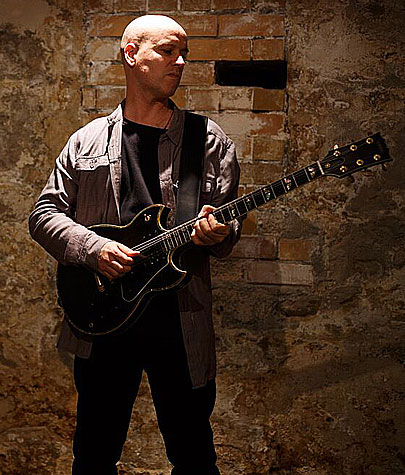 mwe3:
Can you tell us where you’re from originally and where you live
now and what you like best about it?
mwe3:
Can you tell us where you’re from originally and where you live
now and what you like best about it?
Bruce Stringer:
I was born outside Adelaide, in South Australia, and have traveled
quite a bit to places like Taiwan, Hong Kong, China, Korea and Japan.
Although I spent about 5 years living in Nottingham, England, I am,
once again, based in my home town. It’s an interesting place
and the people are good however, like most travelers, the more time
I spend outside Australia the harder it becomes to relate to those
homegrown eccentricities I once grew up with. Life is pretty normal…
I don’t indulge in any Rock ‘n Roll extravagances.
mwe3: I was going to ask where you’ve been hiding, so
to speak, and what took so long to get an album this good from you?
Prog-rock and instrumental prog fans are going to love the One
CD. You would file this under the “progressive rock” banner
right? You call the album ½ne
as in the number one right? How did you choose the “omega”
symbol to use in the album art?
Bruce Stringer:
Ah… I’ve been doing this type of thing for decades but there
hadn’t been any interest until recently. Actually, “Gemini”,
“Mount Etna Erupts”, “Dreaming of Machines” and
“World of Tomorrow” are very, very old tracks which have
been sitting around for decades.
I’m not keen on labels, in general, because it tends to polarize
the audience before they’ve heard a single note. I’m not
sure if the album is Progressive Rock, or not. My definition of progressive
is probably closer to an ideal rather than a sound, which might go
against other people’s definitions of the term. I’ll leave
that up to the listeners to decide.
Regarding the One
concept, I’m a big fan of Taiwanese vocalist Faith Yang Nai-Wen
and her first album in 1997 was titled, simply, “One”. My
idea was pay homage but turn the idea around, making it the last album
first i.e. denoted by the Greek Omega character. It’s a simple
linguistic crossover but it’s not really important if people
don’t pick up on it.
The intention was to carry the concept forward with the second album
being named after the opening track, “Resistance”, which
refers to the Omega concept in the electrical (Ohm) sense however
there are other titles I’ll be choosing from which fit the album
better.
mwe3: How about some background on the making of the One
CD,
for example where and when the music was written and recorded? Can
you tell us about your work in the band “Space Of Snow”
and working with Elaine Wang Yi-Ling? Seems like a lot of the Chinese
feel has been imparted in the artwork of the One
album.
Bruce Stringer:
The idea for One
was as follow-up to the Space Of Snow material. In that, Elaine and
I had a pop-rock vibe happening so we wanted to show what we could
do that wasn’t simply “verse-verse-chorus-verse-chorus (etc)”.
Elaine and her husband, who co-wrote most of the Space Of Snow lyrics,
decided to take some time out from music so we decided to hold off
until the time was right. In the meantime, I dug through some old
demos and decided to go ahead and re-record those and do a solo album
in anticipation of a new Space Of Snow album.
Space Of Snow was a pop-rock duo / band, a Chinese-Anglo version of
Roxette. We recorded one album released in 2010 before being nominated
for a writer’s award then disappearing into the sunset. Elaine
is an award-winning vocalist in her own right and has a very similar
vocal style to Chinese singing legend, Faye Wong. Working with Elaine
is always an enlightening experience because she is highly self-disciplined
and her performances are always sublime.
Due to illness, I‘d been housebound so the recordings were made
at home and then checked on the system at John Reynolds Studios, Adelaide
by Luke Vickery and, later by Wayne Sunderland at Suture Mastering
Studios. Both of them are studio professionals who brought a lot to
the final production of One.
The album was intended for the Asian territories but, as it turned
out, won’t be released there until 2016 so, in the meantime,
we have the opportunity to test the material in the North American
market.
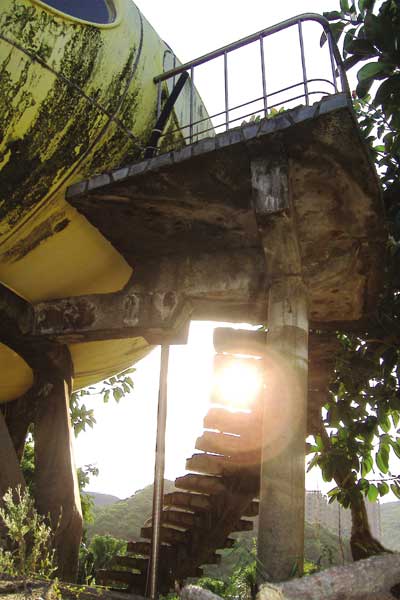 mwe3:
Were you greatly influenced by Chinese music and art? I think we’re
all greatly influenced by Chinese food but the music, culture and
art seems like it’s been overlooked by a lot of westerners.
mwe3:
Were you greatly influenced by Chinese music and art? I think we’re
all greatly influenced by Chinese food but the music, culture and
art seems like it’s been overlooked by a lot of westerners.
Bruce Stringer:
During my school years I became interested in Chinese Gung-Fu (Kung
Fu) and then discovered the benefits and importance of Chinese medicine.
From there, it was only a matter of time before the culture, art and
history of the Middle Kingdom lured me in. The whole Asian region
is filled with highly skilled people in all walks of life, whether
medicine, martial arts, engineering, or any other field.
The people are friendly, intelligent, honest and hard working so it’s
surprising the amount of hostility some western nations have
towards the Chinese who have so much to offer the world. And, if you
like Japanese culture, you’ll find that many of those elements
stem from the Chinese territories.
mwe3: The lead off track on One
is
called “Hieronymus Bosch”. Is that named after the artist
Bosch? What do you find exciting about his art and how did you take
that feel into the track? Favorite Bosch painting?
Bruce Stringer:
Yes, it was named after the artist. Many of his pieces are dark –
a quality which I really relate to and, apart from some of the overtly
religious messages in his art, he manages to hit the same buttons
which sci-fi / horror writer H. P. Lovecraft does for me.
The relationship to the song’s title is primarily the use of
the classical style guitar theme and the “whole-tone scale”
sections which can sound unresolved and, therefore, a little bit unsettling.
I’m not a classical music scholar but the song felt it had a
bit of a Renaissance / post-Dark Ages-era quality to me.
An old Bosch favorite of mine is the “Hell” panel of the
“The Garden of Delights” triptych… which was introduced
to me via Deep Purple’s self-titled album. But please don’t
take that to mean anything beyond a superficial interest in Bosch’s
artistic abilities!
mwe3: What about the guitars and other you feature on the One
album.
You mentioned you record with Yamaha guitars. Do you have an endorsement
with Yamaha and how soon before there’s a Bruce Stringer model
guitar? Your guitars are so superbly recorded on the CD. How about
acoustics and if you can mention some of your favorite keyboards on
the CD?
Bruce Stringer:
Like most guitar players, after years of buying “name” brand
instruments and wondering what the fuss was all about, I discovered
Yamaha’s SG range of guitars. My main guitar is an original SG-800
model and I have a number of different Sgs, including a one-of-a-kind
transitional / prototype model from 1974. Most of the songs feature
the SG-800 but you will hear the SG-60T on “Talk Talk” and
“Gemini”, and an SG-200 on “Hieronymus Bosch”.
I do not have any relationship at all to Yamaha so people should not
read my preferences as any kind of advertisement. However, my preference
for their gear is as much based on the sonic consistency between instruments
as based on their build quality and reliability. If you work with
other Yamaha instruments of similar age you will find they are sonically
compatible and really work well together in a mix which, sort of,
goes against the common notion of super, high quality, high output
instruments competing with each other in the mix.
If you are looking to purchase a new instrument or other gear, always
do the research and find what best suits you and your circumstances.
Getting all your research from blogs can be a bit dubious because
of the amount of people hired by companies to promote their products
but do not disclose their paid arrangements. Companies who produce
good quality, reliable products do not need to do this.
The EQ (equalization) of the album was aimed at removing the harsh
frequencies so it’s listenable and not a form of punishment for
the listener. Since suffering severe damage to my right inner ear
I call on Wayne from Suture Mastering Studios who gives me a lot of
help with that.
 Other brands
I use include Systech (Systems and Technology in Music, Inc, Kalamazoo),
Pearl / Vorg (Japan & Taiwan) and Korg (Japan). Mike Aceto, a
Kenosha-based electronics guru, also builds custom gear for me.
Other brands
I use include Systech (Systems and Technology in Music, Inc, Kalamazoo),
Pearl / Vorg (Japan & Taiwan) and Korg (Japan). Mike Aceto, a
Kenosha-based electronics guru, also builds custom gear for me.
The synthesizers you can hear on the album include:
Yamaha’s CS-30L, CS-10, SY-2, SK-20, V-50 and a very rare SS-30,
a Chinese CME UF-50 with Plugiator ASX, a Korg M-50, Moog MiniTaur
bass synth and the Evolution EVS-1. You will also hear dual Korg X-911
guitar synthesizers on “Hieronymus Bosch”, the solo on album
version of “Mount Etna Erupts” and the bass on “Who
Will Protect the Innocent”. The solo on the alternate, video
version of “Mount Etna Erupts” features a Roland GR-300
guitar synthesizer which, unfortunately, proved to be unsuitable.
From memory, there isn’t any acoustic playing on the album although
the end of “Mathematics” was originally recorded with a
Nashville 12-string guitar and subsequently re-dubbed with the 12-string
neck of an old, Matsumoku double neck guitar from the 1970s. I have
a lot of acoustic material written and, someday, will release an album
of it if there is interest.
mwe3: Can you tell us how you recorded the guitars to get such
a clean and varied sound on the One
album
and who else worked with you, including any other musicians who worked
with you on the CD and what about the drumming sound? Also hearing
the album sounds like you’re very much into vintage and modern
synth keyboard sounds too, correct?
Bruce Stringer:
Most of the guitar parts were recorded through a very inexpensive
Chinese JOYO British Sound pedal via a noise gate, directly into the
desk. No studio trickery, no massive amount of outboard gear between
the guitar and the desk. The guitar signal on “Carnation”
went through the DigiTech RP-100, with delay added afterwards, but
most of the other tracks were pretty straight with a little delay
or effects like phaser / flanger added afterwards. Luke and Wayne
(see above) helped me get the instruments sounding natural but it
couldn’t have been possible without using the original, factory-issue
guitar pick-ups on those guitars mentioned.
A lot of rules were broken because I wanted an “under-produced”,
live feel to the sound and I was the only musician on the recordings
so I can’t blame anybody else for the mistakes!
Drums were created in one of two ways: (i) recording the performance
from a Yamaha DTX-IIs electronic drum kit to MIDI or (ii) writing
“from scratch” on an Atari 1040ST, and feeding the MIDI
information through a Yamaha DTX-3 drum module.
Vintage, analogue synthesizers were used for bass notes, LFO (low-frequency
oscillator) sections – like the middle of “World Of Tomorrow”
and the basis for “OMNI” - ensemble string sounds and many
of the melodies and themes. The Moog MiniTaur was used for bass on
some songs when the Yamaha CS-3L was busy doing other things. A Korg
M-50 was used to add digital touches to the strings to give the tracks
a modern edge.
The black sheep of the synthesizer family is the British Evolution
EVS-1 digital rack-mountable synthesizer, which uses a whole number
of modulation processes to create the most analogue-sounding digital
synthesizer of the 1990s - matched only by some of the Akai synths.
Besides the Yamaha CS-30L, the Evolution EVS-1 is the most used keyboard
instrument and is a favorite tool for writing.
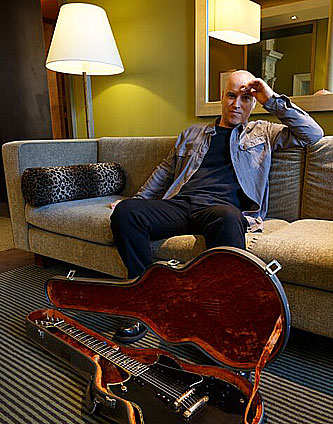 mwe3:
Track 2 “Carnation” is interesting in that you get some
great “Leslie” like effects on the guitar sound. How did
you get that sound? Also why did you call that track “Carnation”?
mwe3:
Track 2 “Carnation” is interesting in that you get some
great “Leslie” like effects on the guitar sound. How did
you get that sound? Also why did you call that track “Carnation”?
Bruce Stringer:
The rotary speaker “Leslie” effect is a dial-up effect on
a DigiTech RP-1000 effects unit. I don’t normally use digital
effects – my preference is for older, analogue effects –
but the DigiTech allowed for the type of sonic manipulation, which
is unaffordable or scarcely available in the analogue realm.
Recently, I picked up a very rare Systech 7012 Voltage Controlled
Flanger rack which will probably be used live for “Carnation”
instead of the DigiTech because it can also serve as a really good
pre-amp.
Regarding the name, “Carnation”, I will refer you to Ron
Howard’s comment in season 4 of “Arrested Development”
- about producing a movie based on a single picture… The fire
imagery was something which had hung around in my mind while recording
and that evolved into the image of an ever-burning flower. When it
was decided to film the music videos, the idea was to produce a computer
generated flower on fire as a loop - a piece of film repeating endlessly.
There wasn’t enough time to organize that so we went with some
stock footage of fire which worked out fine. The end result, sans
the burning flower, is that the listener can now take his or her own
meaning from the title.
mwe3: How about the cover art of the One
CD?
Seems kind of unsettling, in a good way. Who designed the cover and
what is it a picture of?
Bruce Stringer:
The pictures you see on the cover and in the booklet are of the Futuro
House village in Wanli which is on the north coast of Taiwan. The
Futuro House was designed and developed as low-cost, portable, prefabricated
housing in Finland by architect Matti Suuronen back in the 1970s.
Not unlike Le Courbusier with his apartment block designs, time proved
the idea unsuccessful and many have fallen into disrepair or have
been demolished which is very sad but is also an opportunity to take
advantage of the imagery of a retro-futurist, degrading future.
At the time, the photographer we’d booked broke his arm and was
unavailable for the shoot so my friends and I went to the village
and took some low-res 4.1 megapixel shots to act as blueprints for
when the photographer was available.
The layout and design was handled by Georgina Collis at Inspiration
Please and, in the end, we decided to use the low-res images because
they fitted the mood of the subject matter. Although I had the idea
for the cover artwork about a year earlier, when I learned the UFO
Houses at Sanzhih had been demolished. I wanted the CD case design
to be in the Asian DVD-sized format. We had to reformat the images
to suit the conventional DigiPak shape thus cropping the front cover
image and obscuring the Futuro House...
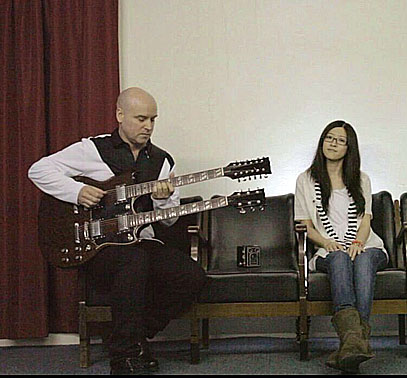 mwe3:
Track 3 “OMNI” is intriguing sounding too. Why do you call
it “OMNI” - in all caps? You call the track a kind of “synth
pop” sound and there is a bit of that kind of synthesized effect
in the bubbling synth sounds and close out vocoder sounds. What synths
did you use on this track?
mwe3:
Track 3 “OMNI” is intriguing sounding too. Why do you call
it “OMNI” - in all caps? You call the track a kind of “synth
pop” sound and there is a bit of that kind of synthesized effect
in the bubbling synth sounds and close out vocoder sounds. What synths
did you use on this track?
Bruce Stringer:
“OMNI” was named after the groundbreaking science fiction
and technology magazine published 1978 – 1995. It was the oddest
track on the album and was very nearly dropped. I think the synth-pop
element could have been pushed further but would have been far less
suited to the album…
The main synth line was created by the LFO (low-frequency oscillator)
on a Yamaha CS-10. It was recorded live and the drums were added note-by-note
to match the LFO which is very difficult to sync to a MIDI / digital
system. In fact, it is a very simple song to play live but took two
months to get right in the studio!
The digital string sounds were the Korg M-50 and the Vocoder sections
were performed through a Korg MS-2000R.
mwe3: You’ve cited artists like Vangelis and Jean Michel
Jarre as symphonic rock influences and you have mentioned other guitarists
like Peter Green and Snowy White as influences but what other guitarists
have inspired you? Your album nearly defies category as it’s
so diverse sounding and cinematic edges keep it from even being categorized
as a guitar album at times…
Bruce Stringer:
As far as the sound of the One
album,
the intention was something along the lines of Vangelis or Jarre with
rock drumming. One guy who has turned this into an art form is movie
director John Carpenter who was a huge influence on the album. The
guitar was always going to be blues-influenced but using modes and
scales defined by the song composition, not the other way around.
Other guitar players who’ve inspired include great unsung masters
like Huw Lloyd-Langton (Hawkwind), Bill Nelson (Bebop Deluxe), Geordie
(Killing Joke), Trevor Rabin, Ritchie Blackmore, Tommy Bolin, Jimmy
Page during his “Lucifer Rising” / “Death Wish II”
period and Alex Lifeson (Rush) but also some of the blues greats like
JB Lenoir, Muddy Waters and B.B. King who’s been a huge influence
on me.
Looking at modern composers in the orchestral field I’d need
to tip the hat to John Barry, Lalo Schifrin and Henry Mancini because
their arranging skills and harmonic vocabulary have been hugely influential.
 mwe3:
Track 4 “Mathematics” has an interesting title. How did
you choose that title and how does it apply to that track?
mwe3:
Track 4 “Mathematics” has an interesting title. How did
you choose that title and how does it apply to that track?
Bruce Stringer:
“Mathematics” was written over the course of about 2 years
a long, long time ago by piecing together some very odd time signatures.
The order of the combined time signatures is an allegory for an ancient
Chinese mathematical model we know as Pythagoras’ Theorem, which
is itself abbreviated from a larger model, probably predating Pythagoras
by centuries.
But don’t read too much into it because, as a piece of music,
if it isn’t aesthetically pleasing then it’s not doing its
job. In Australia and the UK the term used is “Mathematics”
so apologies to those who use the term “Mathematic”!
mwe3: Track 5, “Talk Talk” is kind of humorous. Sounds
like a dig at the TV generation with all kinds of vintage sound clips
and voice effects. Is “Talk Talk” a kind of electro-pop
satire.
Bruce Stringer:
“Talk Talk” came out of an experimentation whereby short
clips of spoken word sounds were randomly placed to see if any meaning
could be generated. The music was created around a melody I was playing
on a Yamaha SY-2 monophonic preset synth and, luckily, it all came
together quite quickly and painlessly. If there is any satire it is
not intentional – most of the sound bytes combinations were completely
random and then reformatted to fit the song.
mwe3: What about other musical influences you have? You mentioned
Be-Bop Deluxe and the guitar synth sounds from the 1970s. How about
other guitar influences and what about other influences along the
lines of guitar heroes like Steve Vai and classical composers you
admire?
Bruce Stringer:
When I was younger the Yardbirds guitarists – Beck, Page and
Clapton – really appealed to me, as did Peter Green and even
John McLaughlin of Mahavishnu Orchestra but the guys who really speak
to me now are players like Snowy White, Huw Lloyd-Langton and Bill
Nelson. My foundation is blues so B.B. King was an important influence
on me from day one.
As you can imagine, I do get a lot of grief for not being a guitar
player’s guitarist because I listen to bands like Siouxsie and
the Banshees, The Sundays, Cocteau Twins, Lush, Killing Joke, etc,
more than I listen to the “technicians”. Obviously, I’m
not disrespecting the Vai's and Satriani's of this world – they
are immensely important to the continuing development of the guitar
as an instrument – but sometimes I get the urge to put music
on which appeals to me on a different level.
I’m seriously interested in songwriters like Suzanne Vega and
Sandee Chan but I do also like to put on the odd Rush, YES, Captain
Beyond, Jean-Luc Ponty, Jan Hammer or Mahavishnu Orchestra LP to get
motivated.
Classical music is not one of my strong points, unfortunately. I like
many composers but really only have a superficial knowledge of some
of those great composers.
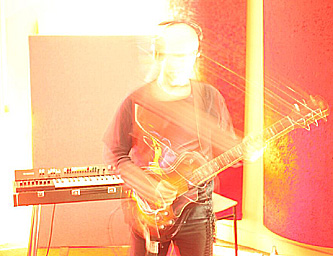 mwe3:
Track 6 is “Mount Etna Erupts”. You say that was written
about your watching a documentary on the actual eruption. How did
you combine the guitars and keyboards to get such a unique sound?
Are there guitars on that track too? The keyboards sounds are quite
original too.
mwe3:
Track 6 is “Mount Etna Erupts”. You say that was written
about your watching a documentary on the actual eruption. How did
you combine the guitars and keyboards to get such a unique sound?
Are there guitars on that track too? The keyboards sounds are quite
original too.
Bruce Stringer:
The earliest 4-track recording of “Mount Etna Erupts” was
scored to match up with the 1971 footage of the eruption. Two VHS
video recorders were linked up to the 4-track and I managed to synchronize
the audio and video together. This was before home computers!
The synthesizer chord sounds were created by plugging a Yamaha SK-20
into an old Ibanez “Wau” (wah) pedal.
There were originally a number of themes played on guitar but these
were dropped for a more minimal sound so the only guitar tracks on
the final versions are of the guitar synthesizer solos.
mwe3: “Dreaming Of Machines”, track 7 is one of the
highlights of the One
album
in that it has a more traditional sound. Kind of a more bluesy track.
Even with a more “traditional” approach, I am glad to see
and hear you keeping the melody front and center throughout, not only
on this track, but the entire album has a keen focus on melodic driven
content.
Bruce Stringer:
By removing the traditional song structure the tracks need a strong
melodic or harmonic foundation to work otherwise it can be pointless
for the listener. For me, variety is also very important. For example,
“Who Will Protect…” is an example of using a recurring
theme over a rock foundation to create a mood whereas “Dreaming…”
has a slow melody over a repetitive backing which is, in a way, a
complete reversal in terms of arrangement. In contrast, the basis
for “Gemini” is pretty sparse and the melodies occur after
a long introduction whereas “OMNI” really pushes the melody
from the first bass drum beat, recurring throughout.
“Dreaming Of Machines” didn’t quite go to plan but
the idea contrasts most other songs on the album… hopefully keeping
it balanced.
mwe3: Track 8, “Gemini” is one of the longest tracks
on the One
CD. It’s much more of a guitar-centric track. How does that fit
into the CD and why do you call it “Gemini”? Is that the
kind of jam-based track on One
after
the more melodic based tracks? The keyboards and guitars are really
interlocking on this track.
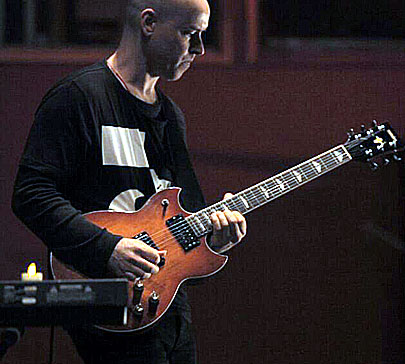 Bruce
Stringer: The original title of “Gemini”
was “Vital Information” but was changed once I started working
on ideas for the video clip, which includes some NASA Gemini Mission
shots mixed with footage from the studio.
Bruce
Stringer: The original title of “Gemini”
was “Vital Information” but was changed once I started working
on ideas for the video clip, which includes some NASA Gemini Mission
shots mixed with footage from the studio.
The track has a long buildup to the dual guitar melodies but the climax
is in the octave-shifted guitar solo. It was difficult to keep the
piece any shorter because the mood ended up being lost when edited
and, although it might sound like a loose arrangement it is one of
the more precise, tighter tracks on the album, compared to “Carnation”
or “World of Tomorrow”.
mwe3: Track 9, “World Of Tomorrow” gets back to the
more melodic aspects of things. In fact there’s also some quite
original ideas on this track too. The ending is very unique with those
foghorn like effects coupled with the synth patterns and then after
the fake ending the song starts rocking again.
Bruce Stringer:
“World Of Tomorrow” was originally going to be the last
song on the album and was much shorter. The middle section was a separate
experimental piece which was reworked to fit as a bridge between the
main song and a reprise. The “foghorn” sound you mention
was created by accident on the Yamaha CS-30L by my synth-tech, Mehdi
El-Aquil -the creative force behind electro-pop duo, Zeequil, during
servicing so he deserves full credit for that!
The guitar sound during the solo at the end was created by running
the signal into a Systech Envelope Follower pedal and then into an
Ibanez / Maxon AD-100 analog delay. It took a few takes to get right
because the delay would self-oscillate and get out of control. I do
like the sound but it was difficult to work with at the time.
mwe3: Track 10, “Who Will Protect The Innocent” sounds
like a great way to end the One
CD. It’s
a cinematic sounding track. Is “Who Will Protect The Innocent”
somehow connected to the first track?
Bruce Stringer:
The only link between the first and last track is the drone chord
which is held throughout “Who Will Protect…” and ends
the album. If you listen to the very start of the CD you will hear
the same chord but in reverse. In a way, it creates a full circle.
 mwe3:
What is “retro-futurism” and how does that term best apply
to the One CD? The CD really sounds like you’re taking
the best of where we’ve been so far while opening up a new front
on 21st century guitar music. I would say this album is very 21st
century right?
mwe3:
What is “retro-futurism” and how does that term best apply
to the One CD? The CD really sounds like you’re taking
the best of where we’ve been so far while opening up a new front
on 21st century guitar music. I would say this album is very 21st
century right?
Bruce Stringer:
Not sure who invented the term “Retro-Futurism” but
the general meaning is a view of the future from a retrospective perspective.
A good example would be the view of the future - let’s say that
far off year of 2020 – as seen in 1950s and 1960s science fiction
movies. Check out the Bebop Deluxe albums Modern Music, Live! In
the Air Age and Air Age Anthology to see how they utilized
the concept.
It is more of a descriptive term than a label and shouldn’t be
confused with things like Steam Punk. It is not a fashion or an artistic
movement although fashion and art can play a role in it. You will
find some of the ideas are – even today – forward thinking.
The problem with retro-futurism is that modern technology, by contrast,
can be disappointing. If you are impressed with the current mobile
/ cell phone technology then you probably haven’t discovered
some of the other interesting technologies which were promised but
never really arrived like the Avro Car, the electric car, Buckminster
Fuller’s floating city, jet-packs, bases on the moon, holographic
technology, genuine Artificial Intelligence, Arco Santi… robots!
 mwe3:
So what are your plans for One
now
and for the immediate future? What are you hoping people will come
away with after listening to your album and where do you see yourself
going into the future, while discussing current and future plans for
you and your music?
mwe3:
So what are your plans for One
now
and for the immediate future? What are you hoping people will come
away with after listening to your album and where do you see yourself
going into the future, while discussing current and future plans for
you and your music?
Bruce Stringer:
Although I hope there’s a market for the album it was never the
intention for me to be in the limelight but to produce something I
would actually listen to myself – if other people enjoy it then
that’s a bonus.
In the future I’ll be continuing the solo work, complete the
as-yet-unfinished new Space Of Snow album – which is leaning
towards an indie / “shoegazer” sound – and release
some of the tracks I’ve recorded for independent film. The second
album is almost complete and I’d like to preview some of that
material live with tracks from One
but organizing shows will be a feat unto itself, especially with regards
the audio-video synchronization.
I have some old recordings featuring Huw Lloyd-Langton and Snowy White
which should be available soon, a selection of experimental pieces
and an album I’ve been producing for another Chinese vocalist,
Niki Jiang Yu. Ideally, I’d like to work with some of my favorite
singers, namely Faith Yang, Nai Wen and Faye Wong but I’m grounded
enough to realize it probably won’t happen any time soon. Besides,
there’s enough on my plate to keep me busy… for now.



